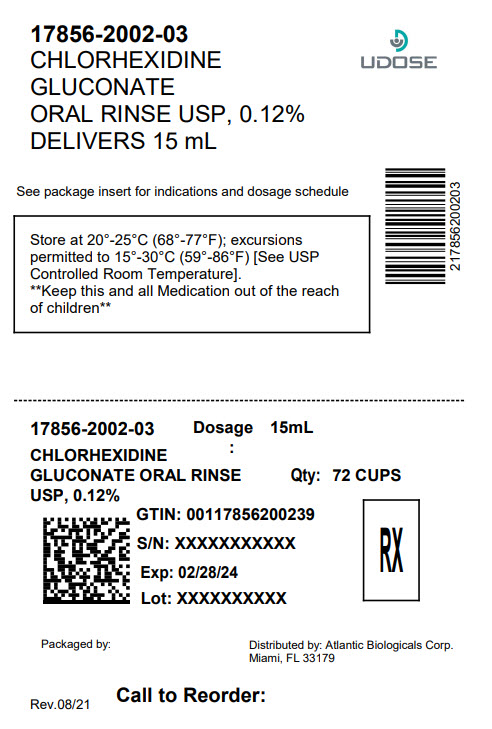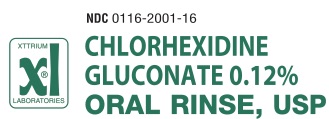Chlorhexidine Gluconate
CHLORHEXIDINE
ec1c2a9f-f0e3-c560-360a-2d2cbdd0cb7c
HUMAN PRESCRIPTION DRUG LABEL
Mar 26, 2020
Atlantic Biologicals Corps
DUNS: 047437707
ATLANTIC BIOLOGICALS CORP.
DUNS: 047437707
Products 1
Detailed information about drug products covered under this FDA approval, including NDC codes, dosage forms, ingredients, and administration routes.
Chlorhexidine Gluconate
Product Details
FDA regulatory identification and product classification information
FDA Identifiers
Product Classification
Product Specifications
INGREDIENTS (7)
Drug Labeling Information
PACKAGE LABEL.PRINCIPAL DISPLAY PANEL
PRINCIPAL PANEL


CLINICAL PHARMACOLOGY SECTION
CLINICAL PHARMACOLOGY
Chlorhexidine gluconate oral rinse provides antimicrobial activity during oral rinsing. The clinical significance of chlorhexidine gluconate oral rinse’s antimicrobial activities is not clear. Microbiological sampling of plaque has shown a general reduction of counts of certain assayed bacteria, both aerobic and anaerobic, ranging from 54–97% through six-months use.
Use of chlorhexidine gluconate oral rinse in a six-month clinical study did not result in any significant changes in bacterial resistance, overgrowth of potentially opportunistic organisms or other adverse changes in the oral microbial ecosystem. Three months after chlorhexidine gluconate oral rinse use was discontinued, the number of bacteria in plaque had returned to baseline levels and resistance of plaque bacteria to chlorhexidine gluconate was equal to that at baseline.
**Pharmacokinetics:Pharmacokinetic studies with chlorhexidine gluconate oral rinse indicate approximately 30% of the active ingredient, chlorhexidine gluconate, is retained in the oral cavity following rinsing. This retained drug is slowly released into the oral fluids. Studies conducted on human subjects and animals demonstrate chlorhexidine gluconate is poorly absorbed from the gastrointestinal tract. The mean plasma level of chlorhexidine gluconate reached a peak of 0.**206 mcg/g in humans 30 minutes after they ingested a 300-mg dose of the drug. Detectable levels of chlorhexidine gluconate were not present in the plasma of these subjects 12 hours after the compound was administered. Excretion of chlorhexidine gluconate occurred primarily through the feces (~90%). Less than 1% of the chlorhexidine gluconate ingested by these subjects was excreted in the urine.
DESCRIPTION SECTION
DESCRIPTION

0.12% chlorhexidine gluconate (CHG) is an oral rinse containing (1,1'-hexamethylene bis [5-(p-chlorophenyl) biguanide]di-D-gluconate) in a base containing water, 11 .6% alcohol, glycerin, PEG-40 sorbitan diisostearate, flavor, sodium saccharin, and FD&C Blue No.1. Chlorhexidine gluconate product is a near neutral solution (pH range 5-7). Chlorhexidine gluconate is a salt of chlorhexidine and gluconic acid. Its chemical structure is:

